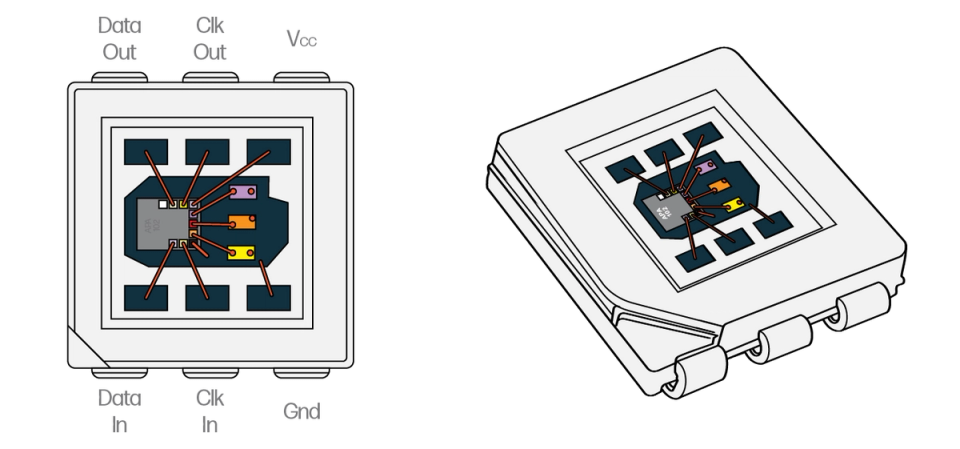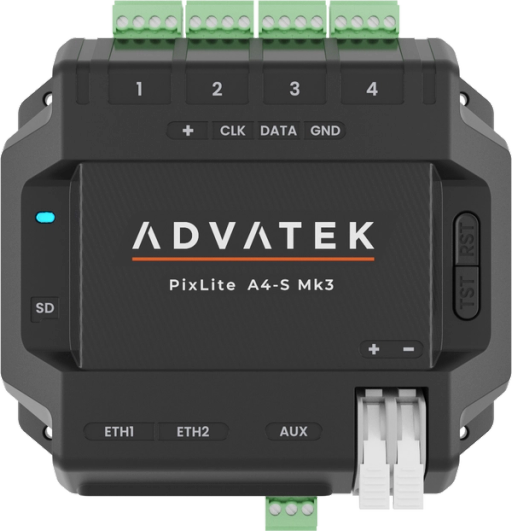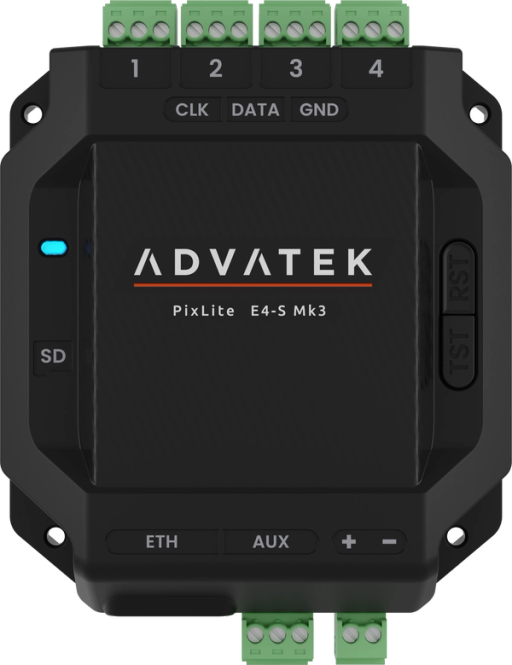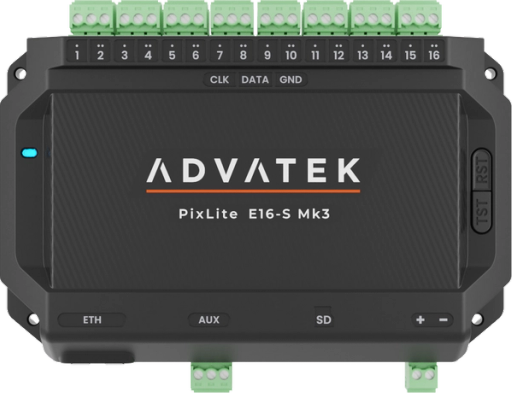Overview
This pixel protocol was designed by APA Electronic Co. in Taiwan. Also known as “Superled”, APA102 is one of the most common protocols for pixel lighting displays. The control circuit and LEDs are integrated in a 5050 SMD package, which provides a small physical footprint for each pixel.
Current Control
APA102 has the ability to digitally control the current of the connected LEDs. Use the 5-bit global current control to lower the brightness without sacrificing resolution. This global brightness control can be set when configuring your PixLite Mk3 controller.

APA102 pixel protocol
Specifications
PixLite Mk1 | |
PixLite Mk2 | |
PixLite Mk3 | |
Clock Type | Clocked |
Color Resolution | 8 Bits |
Current Control | Global: 5 Bits |
Physical Package | SMD5050 with integrated LEDs |
RGB | |
RBGW | |
Input Voltage | 5V |
Output Pixel Voltage | 5V |
PWM Rate | 1920Hz |
Suitable Camera | Up to 67fps |
Data Transfer Rate | N/A |
Redundant Data Line |
Colors
Color | Brightness | Wavelength |
|---|---|---|
Red | 500 – 650 mcd | 620 – 625 nm |
Green | 370 – 530 mcd | 522 – 525 nm |
Blue | 120 – 165 mcd | 465 – 467 nm |
Considerations for Use
Advantages
- Presence of a clock allows for faster refresh rates
- High PWM rate allows for filming these pixels with cameras up to 64fps
Disadvantages
- Only 8 bits of data for each color makes dimming curves less smooth
- Limited to 5V, causing short cable lengths
- No redundancy in data
- Dissipates heat less efficiently than APA102C
PixLite Support
Are you looking for APA102 pixel drivers that work with Art-Net or sACN?
All PixLite Mk1, Mk2, and Mk3 products support APA102 as an available Pixel IC type, so get in touch with us to find out how the lighting specialists at Advatek can support you in your pixel lighting project.

PixLite® A4-S Mk3
Driving up to 24 universes of data, and offering easy mounting, sleek design and electrical fault protection — what’s not to love?

PixLite® E4-S Mk3
The E-series LED pixel controller is made for tighter budgets thanks to its ability to drive up to 24 universes of LED pixel control and route power directly to LEDs.

